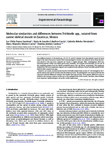
Please use this identifier to cite or link to this item:
http://ricaxcan.uaz.edu.mx/jspui/handle/20.500.11845/834Full metadata record
| DC Field | Value | Language |
|---|---|---|
| dc.contributor | 120273 | es_ES |
| dc.contributor.other | https://orcid.org/0000-0003-1324-4488 | - |
| dc.coverage.spatial | Global | es_ES |
| dc.creator | Franco Sandoval, Luz Ofelia | - |
| dc.creator | Caballero García, María de Lourdes | - |
| dc.creator | Reveles Hernández, Rosa Gabriela | - |
| dc.creator | Moreno García, María Alejandra | - |
| dc.creator | Jiménez Cardoso, Enedina | - |
| dc.date.accessioned | 2019-03-22T20:51:45Z | - |
| dc.date.available | 2019-03-22T20:51:45Z | - |
| dc.date.issued | 2012-03 | - |
| dc.identifier | info:eu-repo/semantics/publishedVersion | es_ES |
| dc.identifier.issn | 0014-4894 | es_ES |
| dc.identifier.uri | http://localhost/xmlui/handle/20.500.11845/834 | - |
| dc.identifier.uri | https://doi.org/10.48779/zhj6-7r10 | - |
| dc.description.abstract | Four different isolates of Trichinella spp. (Z1, Z2, Z3, and Z4) obtained from the skeletal muscle of street dogs in the state of Zacatecas, Mexico were serial passaged in Wistar rats; infective larvae from the skeletal muscle of the rats were collected and frozen in liquid nitrogen. After centrifugation, DNA was extracted and the 5SRNAr and IsRNAr genes were amplified. The isolates were identified by the size of the amplified products from the 5SRNAr and IsRNAr genes (750 and 290 bp, respectively). The amplicons obtained by PCR were sequenced, aligned, and compared to the reference strain Trichinella spiralis MSUS/ MEX/91//EM isolated from pigs. Based on our results, we determined that the Trichinella isolates from canine (Z1–Z4) belonged to the T. spiralis species and had 83% identity with the reference strain. The phylogenetic tree constructed from the sequences showed differences between the isolates from pig and dog. These genetic differences may be related to the immune response of the host or the pathogenicity of the isolates. Therefore, these findings have important epidemiological and public health implications. | es_ES |
| dc.language.iso | spa | es_ES |
| dc.publisher | Elsevier | es_ES |
| dc.relation.uri | generalPublic | es_ES |
| dc.rights | Atribución-NoComercial-CompartirIgual 3.0 Estados Unidos de América | * |
| dc.rights.uri | http://creativecommons.org/licenses/by-nc-sa/3.0/us/ | * |
| dc.source | Experimental Parasitology, Vol. 131, 2012, pp. 148-152 | es_ES |
| dc.subject.classification | BIOLOGIA Y QUIMICA [2] | es_ES |
| dc.subject.other | PCR | es_ES |
| dc.subject.other | Canine | es_ES |
| dc.subject.other | 5SRNAr | es_ES |
| dc.subject.other | 1sNAr | es_ES |
| dc.title | Molecular similarities and differences between Trichinella spp., isolated from canine skeletal muscle in Zacatecas, Mexico | es_ES |
| dc.type | info:eu-repo/semantics/article | es_ES |
| Appears in Collections: | *Documentos Académicos*-- UA Ciencias Biológicas | |
Files in This Item:
| File | Description | Size | Format | |
|---|---|---|---|---|
| Similitud Molecular. Zacatecas..pdf | 2,53 MB | Adobe PDF |  View/Open |
This item is licensed under a Creative Commons License
